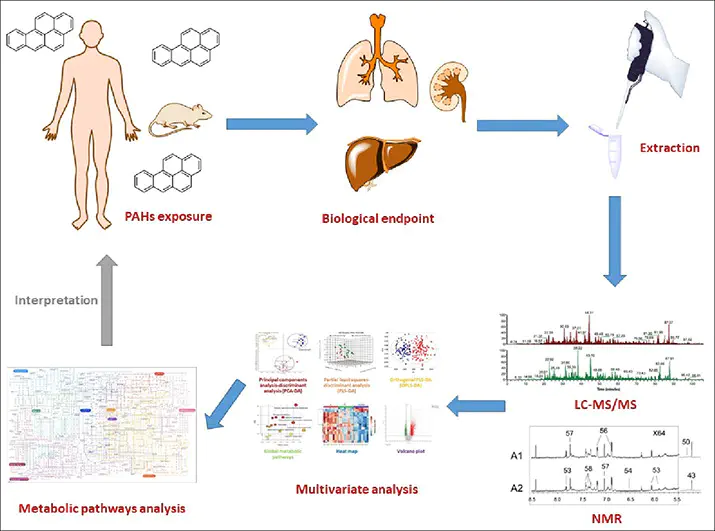Human exposure to polycyclic aromatic hydrocarbons: Metabolomics perspective

Abstract
Polycyclic aromatic hydrocarbons (PAHs) are organic contaminants exhibiting carcinogenic toxicity. They are widespread in the environment, especially in urban areas. Humans are exposed to PAHs via inhalation, ingestion and dermal contact. Though much research has investigated their toxicity, little is known regarding the metabolic responses in humans after exposing to PAHs. However, those studies are important since PAHs become carcinogenic after metabolic activation by humans as indirect-acting carcinogens. As such, it is important to study their metabolism in humans based on metabolomics analysis. The goal of metabolomics study is to obtain a comprehensive view of metabolic reactions in humans after exposing to PAHs to better control the underlying metabolisms and reduce their genotoxicity. This article reviewed the biomarkers, analytical techniques including nuclear magnetic resonance and mass spectrometry, big data multivariate statistical analysis, and animal models that have been utilized to better understand the biological effects of PAHs, PAH-derivatives, and their metabolites and biotransformation products on humans.